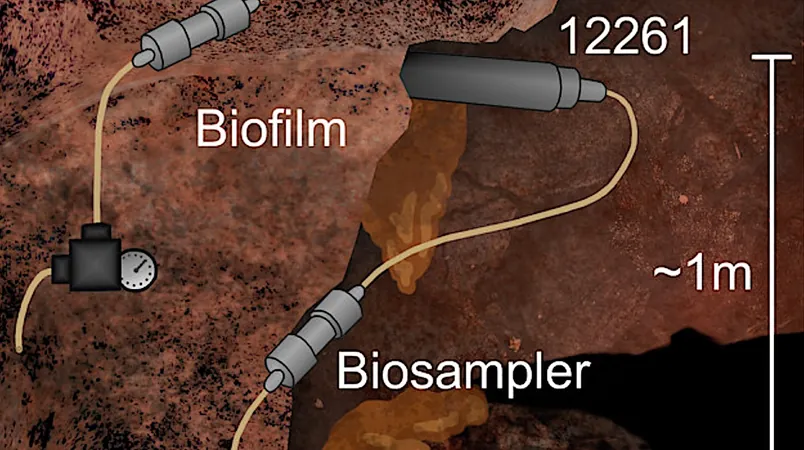
Uncovering the Ancient Secrets of Earth's Deep Microbial Communities: Meet Candidatus Frackibacter!
2025-01-10
Author: John Tan
Introduction
In a groundbreaking study that could enhance our understanding of Earth's biogeochemistry and the potential for extraterrestrial life, researchers have unveiled the intricate microbial communities thriving deep beneath the surface. These findings specifically emanate from the Kidd Creek Observatory's subsurface fracture water system, where scientists have found microbial life that has been adapting for hundreds of millions, even over a billion years.
Discovery of Candidatus Frackibacter
Utilizing advanced 16S rRNA analysis, the team discovered that biosamplers, which were situated far from the disturbances of mining activities, were predominantly inhabited by a mysterious putatively anaerobic and halophilic bacterium, Candidatus Frackibacter, belonging to the Halobacteroidaceae family. This discovery raises fascinating questions about the resilience and adaptability of such microorganisms in extreme environments.
Environmental Impact on Microbial Diversity
In stark contrast, samples retrieved from areas exposed to mining operations revealed the presence of aerobic Sphingomonas bacteria, hinting at the drastic differences in microbial diversity based on environmental changes. The analysis of phospholipid fatty acids derived from the microbes, coupled with predictive functional modelling from 16S rRNA gene profiles, suggests that Candidatus Frackibacter primarily feeds on carbon sourced from ancient carbon-rich layers prevalent in these deep systems.
Indigenous Nature of Candidatus Frackibacter
Interestingly, these insights propose that Candidatus Frackibacter is not merely a product of hydraulically fractured sedimentary basins but is instead indigenous to a broad spectrum of deep, saline groundwater environments that are nestled within carbon-enriched geological formations.
Borehole Analysis and Biofilm Representation
The research meticulously showcases boreholes 12299 and 12261, including a detailed representation of the biofilm that has developed around and below borehole 12261, bringing to light the complexity of these subsurface ecosystems.
Implications for Astrobiology
This study not only broadens our horizons regarding life on Earth but also illuminates pathways to locate potential life beyond our planet, making it a pivotal reference point in the ongoing quest to explore astrobiology and the limits of life in extreme conditions.
Conclusion
As we delve deeper into the mysteries beneath our feet, the potential discoveries awaiting us are endless. Could these ancient microbes hold the key to understanding life's resilience across the universe? Stay tuned as the scientific community continues to explore these fascinating frontier findings!



 Brasil (PT)
Brasil (PT)
 Canada (EN)
Canada (EN)
 Chile (ES)
Chile (ES)
 Česko (CS)
Česko (CS)
 대한민국 (KO)
대한민국 (KO)
 España (ES)
España (ES)
 France (FR)
France (FR)
 Hong Kong (EN)
Hong Kong (EN)
 Italia (IT)
Italia (IT)
 日本 (JA)
日本 (JA)
 Magyarország (HU)
Magyarország (HU)
 Norge (NO)
Norge (NO)
 Polska (PL)
Polska (PL)
 Schweiz (DE)
Schweiz (DE)
 Singapore (EN)
Singapore (EN)
 Sverige (SV)
Sverige (SV)
 Suomi (FI)
Suomi (FI)
 Türkiye (TR)
Türkiye (TR)
 الإمارات العربية المتحدة (AR)
الإمارات العربية المتحدة (AR)